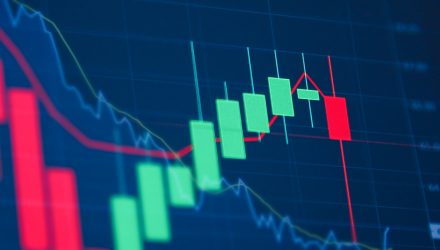As we examine the current market risks, exchange traded fund investors could consider a hedged market strategy to stay fully invested with less downside risk.
In the recent webcast, Don’t Lose Sleep! Hedged Equity for a Restful Portfolio, Jamie Atkinson, Managing Director – Head of Global Sales, Swan Global Investments, underscored the dual dilemma in today’s’ market environment. Bond markets appear out of gas and the traditional role of bonds is in peril as inflation risks erode real yields. Meanwhile, U.S. equities are near all-time highs, valuations appear rich, and long-term expectations are more muted after the recent rally.
Marc Odo, Client Portfolio Manager, Swan Global Investments, also highlighted the ongoing concerns over how inflation will affect the market outlook. On the supply side, there are bottlenecks in the global supply chain while lingering effects of the trade wars have added pressure. On the demand side, pent-up demand from a year of lockdowns and copious stimulus. The combination of limited supply and increased demand could contribute to higher prices and inflationary pressures.
In this type of environment, investors have had to adapt to a lower-for-longer rate environment by turning to cash, structured products, and gold as safe-haven plays. On the other hand, more aggressive investors have raised stock allocations, chased momentum technology winners, turned to speculative-grade bonds, and bought speculative bets like crypto in search of higher returns.
Consequently, investors need some kind of hedge that addresses left tail risks like market crisis, Covid-19, large loss, and a long recovery process, while simultaneously tackling right tail risks like under-allocation to equities and missing out on potential returns.
As a way to maintain equity market exposure with some downside protection, Odo pointed to the Swan Hedged Equity U.S. Large-Cap ETF (HEGD).
The Swan Hedged Equity U.S. Large-Cap ETF is always passively invested in S&P 500 Index ETFs, and it hedges against this equity-side risk through actively managed long-term put options purchased at or near-the-money to mitigate risks of bear markets. Finally, HEGD has actively managed option trades utilizing a disciplined, time-tested approach as a means to generate additional return to offset the cost of the hedge.
HEGD uses Long-term Equity Anticipation, or LEAP, option contracts that expire at least one year from the date of purchase. The long-term hedge is used because it may last longer than bear markets, may not be under duress to re-hedge during crisis, and may provide the opportunity to acquire more shares of underlying equity ETFs during major market sell-offs. The hedge is also rolled annually so that the portfolio is always hedged and mitigates exposure to declines in value of put options.
HEGD can also serve different objectives for different investor types. For example, it may help increase return potential while maintaining a similar risk target for traditional allocation. The strategy can help shift cash off the sidelines and remain invested to increase market exposure. Finally, the ETF can help re-allocate to equity positions as a means of mitigating downside risk or volatility.
It is “difficult to consistently and successfully execute market-timing strategies,” according to Atkinson. “Therefore, we remain always invested – passive buy-and-hold.”
The “key to long-term wealth creation is to minimize downside risk. Therefore, we remain always hedged – actively managed, seeking to mitigate market risk,” he added.
Financial advisors who are interested in learning more about ways to manage downside risk can watch the webcast here on demand.
